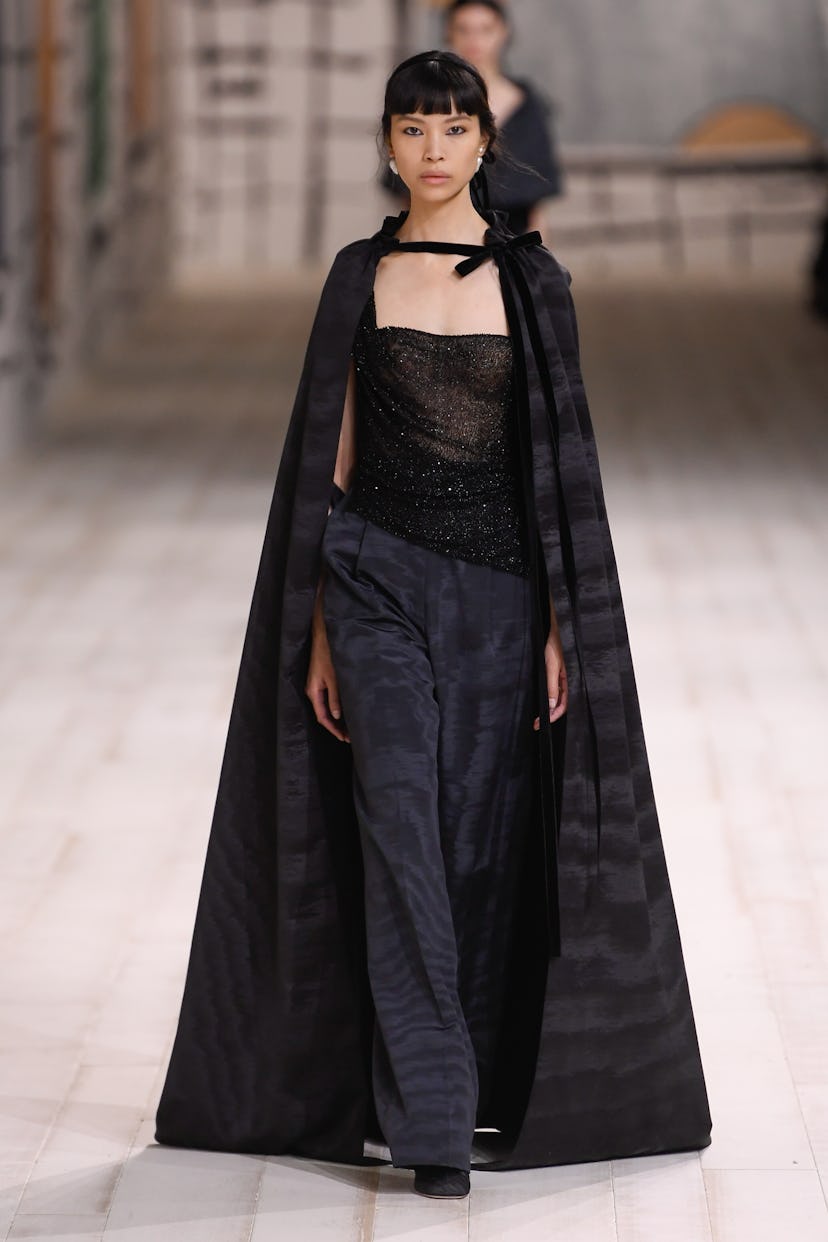At Dior, Wardrobe Staples Take On the Whimsy of Poor Things
For spring 2024 haute couture, Maria Grazia Chiuri contemplated girlhood, womanhood—and the fashion industry’s expectations.

Dior’s spring 2024 haute couture show opened with a boom: Jerskin Fendrix’s unnerving soundtrack for Yorgos Lanthimos’s latest film, Poor Things, caused the floor of The Rodin Museum in Paris to shake. The venue’s walls were printed with childlike, imaginative imagery of 23 massive dresses—each one towering about 15 feet high, totally and deliberately disproportionate to life-size humans—designed by the visual artist and writer Isabella Ducrot and embroidered by the Chanakya School and Craft & Atelier. Then, a recording of the actress and model Violeta Sanchez could be heard on the speakers as she recited the poem, “To Weave is Human” written for Ducrot by Patrizia Cavalli. An eclectic mix of Björk songs played in the background. Rihanna was the surprise front-row guest that had everyone gawking. It all culminated in a distinctly otherworldly experience.
And yet, while the visual and musical soundscape may have read surreal, creative director Maria Grazia Chiuri had something more practical in mind. From the moment the first model walked the runway, the designer seemed to interrogate women’s modern wardrobe staples, converting them into high fashion with couture flourishes. She began with khaki before working her way to the gray wool suit, the classic black dress, and even the ballgown.
A few recurring pieces from the collection included textural wonders of feather details, little tailored suits, black pleated dresses, and sheer beaded skirts worn with wool pants. (One feathered top paired with matching white slacks resembled a cherub’s wing.) But even at their most extravagant, the clothes bore an overarching feeling of the everyday.
The core of the collection comprised pieces that prioritized wearability over fantasy. Chiuri took the everyday, the mundane, and proved that it could have a couture attitude—at least, in her world. Much like the poem that was read aloud, spring 2024 was a subtle study of women, what they wear, and how their clothes are made. “Rag or brocade, every women textile thus results from this enforced embrace, a grand design that only human minds are meant to grasp and execute; and thus a marriage that could not in nature ever find its place,” Sanchez recited. “Take the spider, poor thing. It dupes. The spider doesn’t weave; the spider glues.”
The playful opening ode to Poor Things was most present in the pieces that had a slightly vintage, innocent edge—but reinterpreted for grown women. Billowing floor-length polka-dot dresses with big skirts and low necklines were great fun; a very Victorian-looking black gown with feathered arms and a slinky mustard yellow slip dress that was twisted at the neckline played with the idea of toeing the line between girlhood, womanhood, and the fashion industry’s expectations.